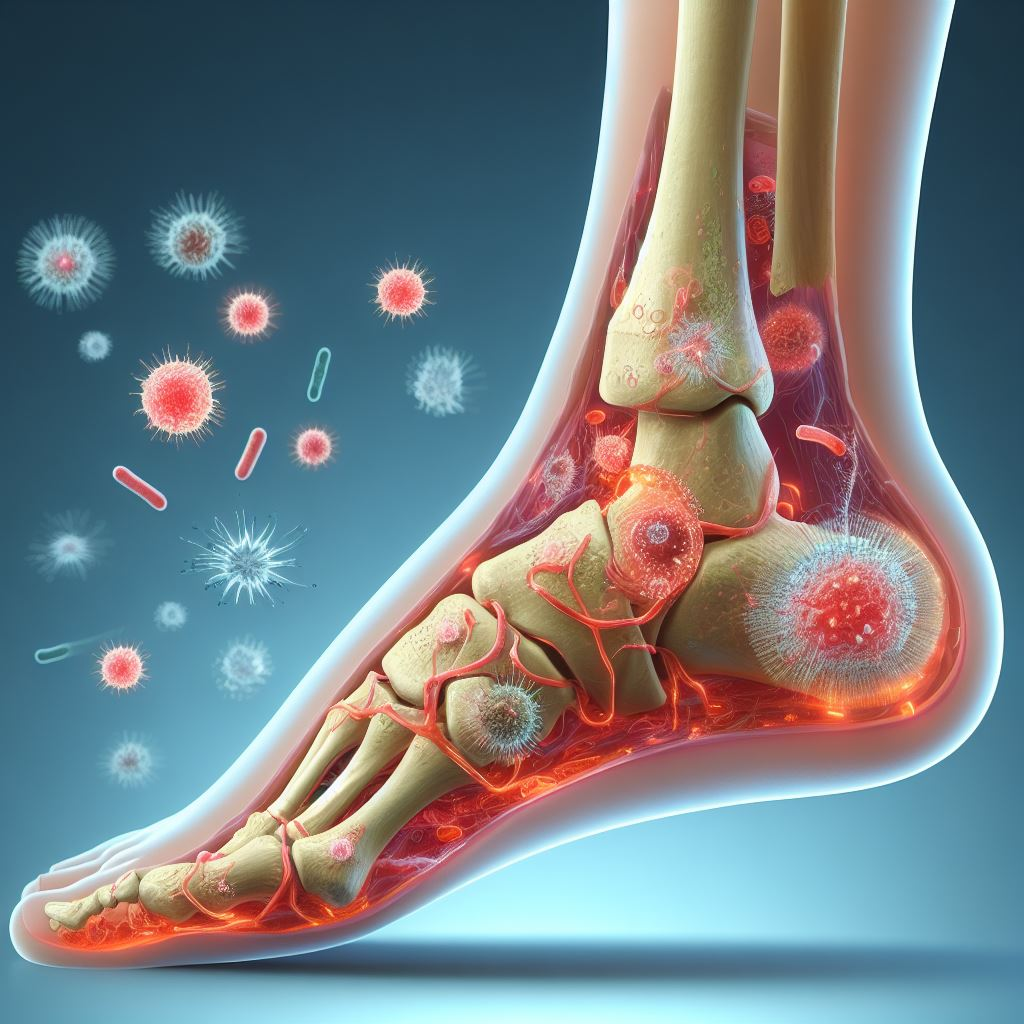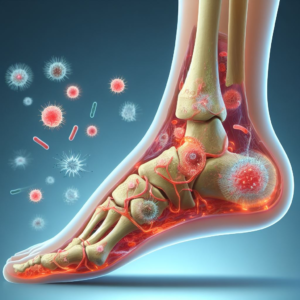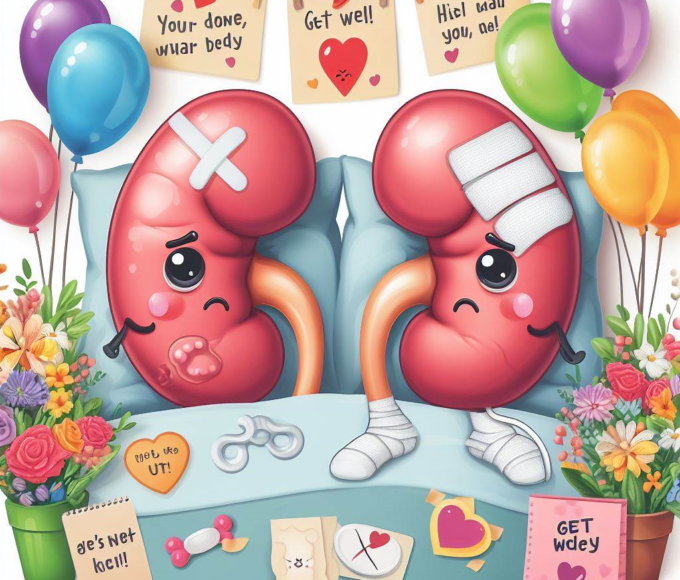Nursing Care Plan for Acute Osteomyelitis of Ankle Foot right (HCC) patient

Hi Bff! In this blog post, I will share with you how to complete a nursing care plan for a patient with acute osteomyelitis of the right ankle foot (HCC). Osteomyelitis is an infection of the bone that can be caused by bacteria, fungi, or other microorganisms. It can affect any bone in the body, but it is more common in the long bones of the arms and legs, the spine, and the feet.
Osteomyelitis can be acute or chronic, depending on the duration and severity of the infection.
Acute osteomyelitis is a sudden onset of bone infection that usually lasts less than six weeks.
It can be caused by trauma, surgery, ischemia, or bacteria from surrounding tissues.
The most common causative agent is Staphylococcus aureus, which can enter the bone through an open wound, a puncture, or the bloodstream. Acute osteomyelitis can cause severe pain, fever, inflammation, and pus formation in the affected area. If left untreated, it can lead to bone necrosis, impaired growth, septic arthritis, or sepsis.
Some risk factors for osteomyelitis are:
– Diabetes mellitus
– Peripheral vascular disease
– Sickle cell disease
– HIV/AIDS
– Rheumatoid arthritis
– Immunosuppressive therapy
– Intravenous drug use
– Prosthetic devices
– Trauma or surgery
A nursing care plan for a patient with acute osteomyelitis of the right ankle foot (HCC) should include the following:
– Assessment: The nurse should assess the patient’s vital signs, pain level, signs of inflammation (swelling, warmth, redness), range of motion, wound appearance and drainage, blood tests (white blood cell count, erythrocyte sedimentation rate, C-reactive protein), imaging tests (X-ray, MRI, CT scan), and bone biopsy results. The nurse should also ask about the patient’s medical history, risk factors, medications, allergies, and lifestyle habits.
– Diagnosis: Based on the assessment data, the nurse should identify the nursing diagnoses that are relevant to the patient’s condition. Some possible nursing diagnoses are:
– Acute pain related to inflammation and infection of the bone
– Impaired skin integrity related to wound or ulcer formation
– Risk for infection related to invasive procedures or compromised immune system
– Impaired physical mobility related to pain and reduced range of motion
– Deficient knowledge related to disease process and treatment regimen
– Planning: The nurse should establish the goals and expected outcomes for each nursing diagnosis. The goals should be specific, measurable, attainable, realistic, and time-bound. Some examples are:
– The patient will report pain relief within 30 minutes of analgesic administration
– The patient will have no signs of wound infection or deterioration by discharge
– The patient will demonstrate proper wound care techniques by day 3
– The patient will maintain full range of motion of the right ankle foot by day 7
– The patient will verbalize understanding of osteomyelitis causes, prevention, and treatment by discharge
– Implementation: The nurse should carry out the interventions that are appropriate for each nursing diagnosis. The interventions should be evidence-based and tailored to the patient’s needs and preferences. Some examples are:
– Administer analgesics as prescribed and monitor pain level and response
– Apply ice packs or warm compresses to the affected area as indicated
– Elevate the right leg above the heart level to reduce swelling and promote circulation
– Cleanse and dress the wound or ulcer as ordered and observe for signs of infection
– Administer antibiotics as prescribed and monitor for adverse effects
Educate the patient about osteomyelitis signs and symptoms, risk factors, complications, and prevention strategies.
Teach the patient how to perform wound care at home and when to seek medical attention.
Encourage the patient to adhere to the prescribed treatment regimen and follow-up appointments.
Provide emotional support and reassurance to the patient and family.
– Evaluation: The nurse should evaluate the effectiveness of the interventions and the progress of the patient towards achieving the goals. The nurse should compare the actual outcomes with the expected outcomes and identify any gaps or discrepancies.
The nurse should also document the evaluation findings and communicate them to the interdisciplinary team. If needed, the nurse should modify or update the nursing care plan based on the evaluation results.
I hope this blog post has helped you understand how to complete a nursing care plan for a patient with acute osteomyelitis of the right ankle foot (HCC). If you have any questions or comments, please feel free to leave them below. Thank you for reading!
Related Articles
How to Identify your Time Wasters and Eliminate them
Certainly! Let’s talk about time wasters at work. These are activities or...
By Roberta DivaFebruary 21, 2024Nursing Care Plans for Acute Renal Failure
Acute renal failure (ARF), also known as acute kidney injury (AKI), is...
By Nursing BFFNovember 4, 2023Acute Renal Failure
Acute renal failure, also known as acute kidney injury, is a condition...
By Nursing BFFNovember 4, 2023Nursing Interventions For a COPD Patient
Chronic obstructive pulmonary disease (COPD) is a common and progressive respiratory condition...
By Nursing BFFNovember 2, 2023








Leave a comment